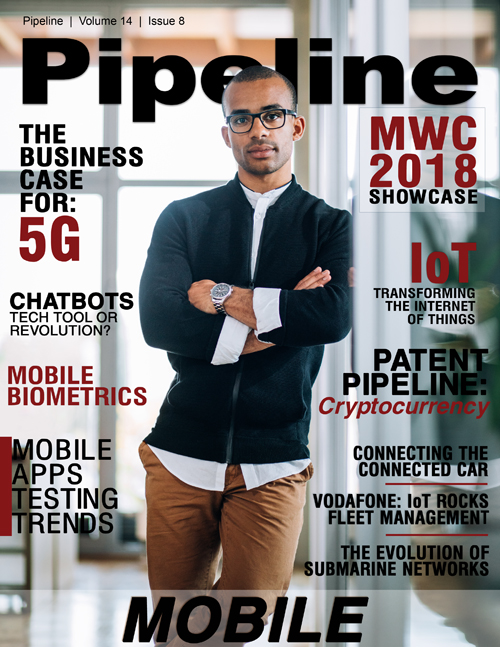Patent Pipeline: Bitcoin Has Spurred Digital Currency Technologies
By: Alec Schibanoff

You cannot avoid Bitcoin. It is in the news every day, and the more volatile the pricing of this leading digital currency or cryptocurrency (the terms are interchangeable), the more news it generates. While Bitcoin is just one of the emerging digital currencies – there is also Ethereum, Litecoin, Zcash, Dash, Ripple and Monero – Bitcoin has zoomed to the top to be the leading cryptocurrency.
Bitcoin has a mind-blowing Market Cap of $144 billion. Yes, billion with a “B.” All of the issued Bitcoins in circulation (16,861) times the average value of one Bitcoin ($8,595 as of the writing of this article) is how one gets to a market capitalization of $114 billion! Bitcoins cannot be ignored, and the Innovation Community has not ignored them.
In this edition of Patent Pipeline, we look into the future of the Bitcoin by looking at four U.S. Patents that cover Bitcoin-related technologies.
Bitcoin-accepting gaming machines
U.S. Patent No. 8,449,378 for a “Gaming system, gaming device and method for utilizing bitcoins” is one of two Bitcoin gaming patents from IGT (International Gaming Technology), the leading manufacturer of gaming equipment such as slot machines and computerized Poker and Blackjack machines. This patent was published in 2013 and has 20 Claims. While the title of the patent references “Bitcoins,” the claims in the patent are much broader.
This patent is cleverly written to include not just Bitcoins, but any digital currency, as well as any “wagering game” that can be played on a display device. So, that covers everything from slot machines to computer Poker. The patent permits the user to play with Bitcoins or other digital currencies, and be paid his or her winnings in Bitcoins or other cryptocurrency. The gaming device described in the patent includes a video console, an input device, and a processor. The process covered by the patent is to (a) receive a wager of an amount in a specific currency on a play of a wagering game, (b) have the processor execute a plurality of instructions to generate an outcome for the play of the wagering game, (c) have the console display the generated outcome of the play of the wagering game, and (d) provide an award – if the player wins – to be paid out in the specific currency the game user started with.
It will be just a matter of time before casinos – both physical and online – will be accepting digital currency, most likely starting with Bitcoin.
Bitcoin ATM
U.S. Patent No. 9,135,787 for a “Bitcoin kiosk/ATM device and system integrating enrollment protocol and method of using the same” creates the first ATM specifically for buying and selling Bitcoins. The patent is from two independent inventors, John and Mark Russell, it was published in 2013, and it has 12 Claims.
The invention is most comprehensive. It includes a bill validator, a bill dispenser, a user interface, a biometric interface, an ID scanner/reader, a camera, and a processor programmed to run executable instructions – many of the same elements that make up a conventional ATM, except for its ability to accept and dispense Bitcoins. The patent also includes a carefully defined security methodology for insuring the identity of each user. It starts with the input of the customer's mobile phone number via the user interface, followed by the transmission of a text message that includes a random code to the mobile phone of the customer. Next steps include verification of the random code that was sent to the customer via the user interface to confirm that customer's mobile phone number; input of a PIN from the customer via the user interface; input of biometric data such as a palm print from the customer; an image of the customer (captured via the Bitcoin ATM’s camera); and verification of the identity of the user from a driver’s license or other form of photo ID using the machine’s ID scanner/reader.Shortly after the publication of this patent, Bitcoin ATMs started showing up – the latest estimate is that there are about 1,500 of them in use today – that use many of the elements in the patent. Those manufacturers and owner/operators will clearly have to take a license for this Patent!



















